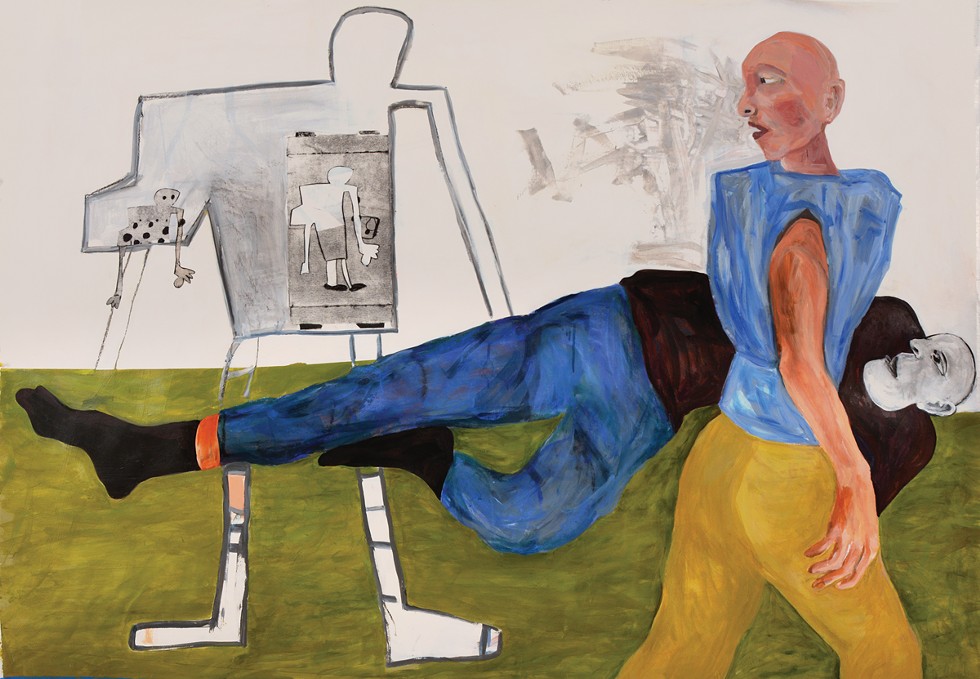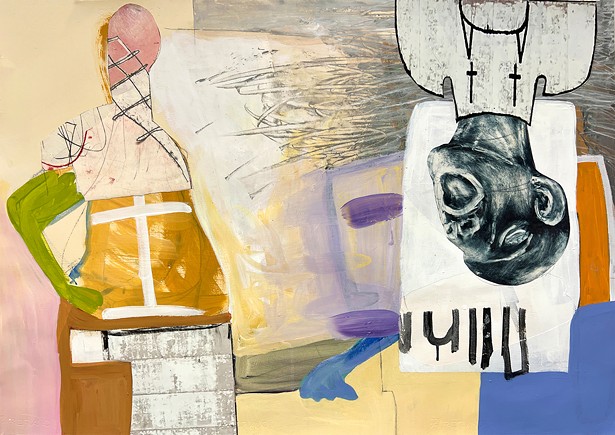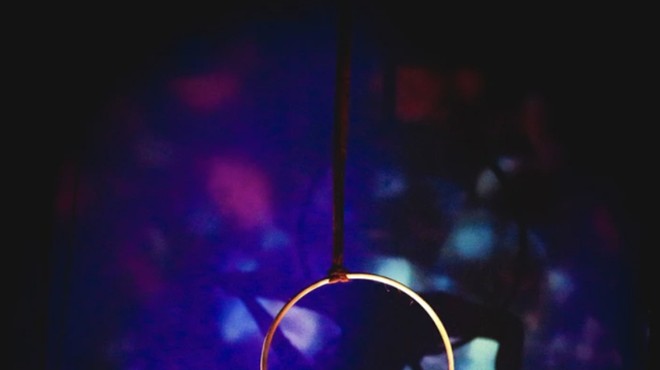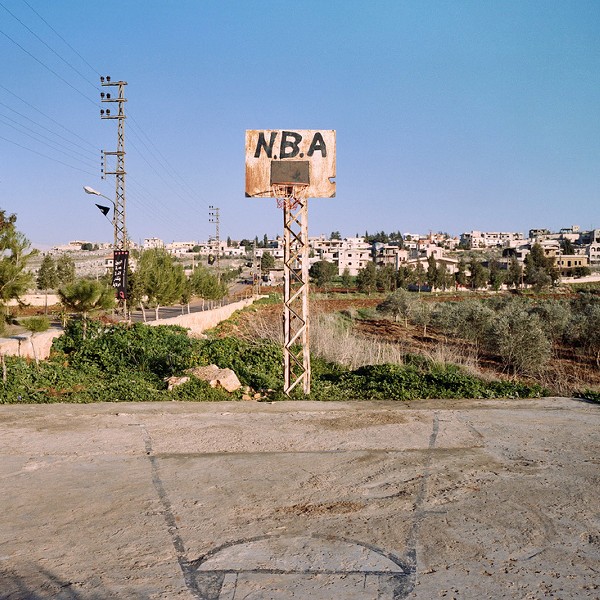Everything in the East was black and white; everything in the West was technicolor," says Tatana Kellner. She's talking about moving from Eastern Europe to the US in 1969. Some of Kellner's technicolor art—under the title "Sideway Glances"—is at the Garrison Art Center until March 10.
Kellner was born in Czechoslovakia in 1950 to two survivors of Nazi concentration camps. She grew up under Communism, but her parents were able to leave the country after the Prague Spring of 1968. Kellner followed with her sister, and soon the family relocated to Toledo, Ohio. Kellner was 18.
Almost immediately she began college, studying art at the University of Toledo. She moved on to graduate school at the Rochester Institute of Technology, where she met her life partner—and now wife—Ann Kalmbach. Along with Barbara Leoff Burge and Anita Wetzel, they founded the Women's Studio Workshop in a rented house in Rosendale in 1974. This cooperative nonprofit has sponsored over 800 internships and residencies, and is the single largest publisher of artist-designed books.
Kellner was one of the first artists to rediscover papermaking, and then to employ paper pulp in her work. The pieces began to morph into sculpture. Kellner expanded into other media: photography, collage, printmaking, video, installation.
In 1992, she produced a book honoring her parents: Fifty Years of Silence. Kellner cast replicas of their arms, scrupulously reproducing the numbers tattooed on them at the Nazi death camps. That book is currently on display at the main branch of the New York Public Library on Fifth Avenue.
Kellner retired from the Women's Studio Workshop six years ago, and has since devoted herself full-time to painting. She prefers the texture of paper to stretched canvas. Though the pieces in "Sideways Glances" are pictorial, they begin abstractly. I ask Kellner what the first shapes are like. "Usually it's a charcoal mark or a brushstroke, sometimes an irregular shape, or a found fragment from another piece that didn't pan out," she says.
Collage functions the way revision works in painting. One can always add more paint to a canvas, to cover up an unfortunate corner, but paper is less forgiving. What Kellner does is cut out the piece of the drawing she likes, and glue it onto the next composition.
She has often made art in response to political issues, but such work "has an expiration date," as Kellner puts it. Though the pieces in "Sideway Glances" aren't explicit polemics, they reflect social issues of the last several years—particularly the Black Lives Matter protests and the global pandemic. Fight seems to show an African-American man raising his fist and shouting—but who is the naked white person sitting in a chair behind him? And is it a person, or a mannequin? And is that a chair, or perhaps a piano bench? And why is the white person slouching?
The resolute ambiguity of the images may be seen as a political statement in itself. Growing up under Communism, in the shadow of Nazism, Kellner has an allergy to propaganda. The images look dreamlike to me, but when I ask if her nighttime dramas influence her art, Kellner says she never recalls her dreams.
"I don't find most jokes funny," Kellner remarks, but she chuckles as she speaks, and admits that there is humor in her work: humor rather than comedy. Repercussion, for example, shows a woman—drawn in a loose, expressionist manner—waving her arm as if she's saying: "Hey, lay off, willya?" Behind her is an olive-green plant that looks like a feather duster. Is this a housewife who refuses to do her chores, for whom an aloe plant resembles her hated feather duster?














